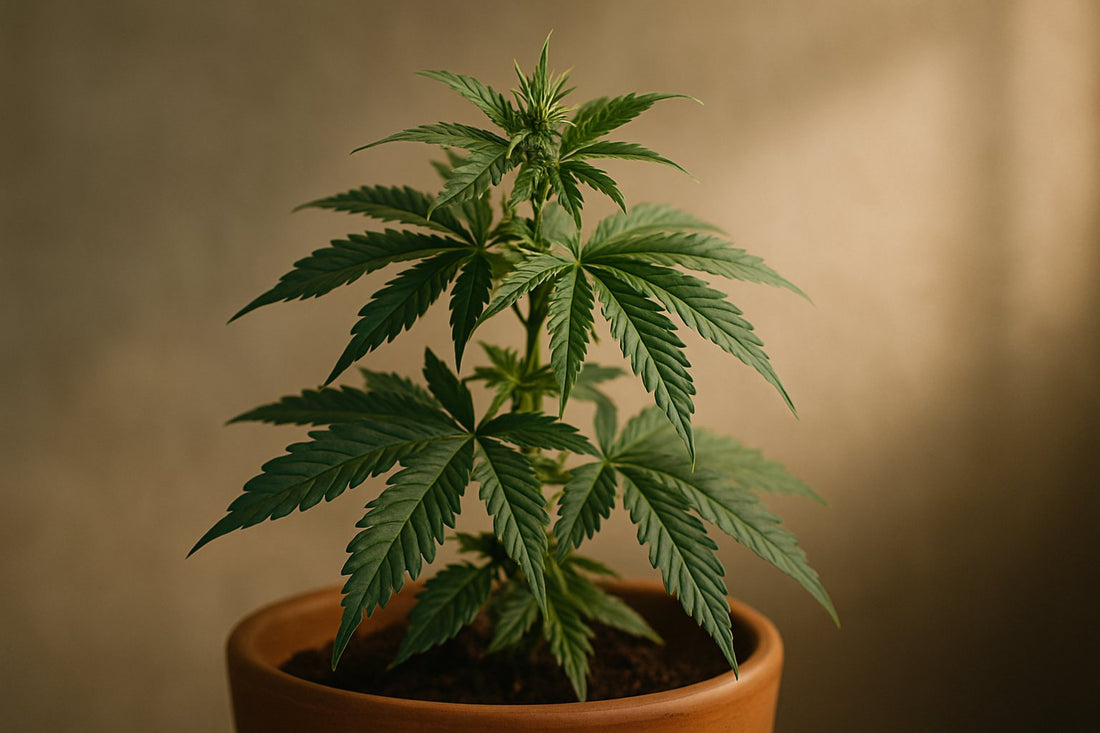
Growing cannabis at home: light, air, space and fertilizers – how to succeed
Home growing is becoming more and more popular, but many people find it challenging to get started. The internet is full of information that can be contradictory or overly technical. This article focuses on what a cannabis plant needs to thrive. No gimmicks, no additives – just the essentials.
1. Light – a plant’s substitute for sunlight
Light is the plant's energy. It is the engine of growth and directly affects the quality and quantity of the harvest. Good light does not have to be expensive, but it has to be the right kind. LED light is currently the most popular choice: it consumes little, produces little heat and lasts for years.
The most important thing is to make sure there is enough light and that it is evenly distributed over the plant. Reflective surfaces help a lot with this.
2. Photoperiod – rhythm for growth and flowering
In addition to the amount of light, the length of time a plant receives light per day is also crucial. This is called the photoperiod. During the growth phase, the plant usually needs 18 hours of light and 6 hours of darkness (18/6). The transition to flowering occurs when the photoperiod is shortened to a 12/12 rhythm.
The change in light cycle is a signal to the plant that the season is changing. Without sufficient darkness, the plant will not flower or may become stressed.
3. The importance of darkness – rest and hormonal function
Darkness is not just a lack of light. A plant needs regular periods of darkness for rest and hormonal processes. Darkness is a crucial factor for flowering: if the darkness is disturbed, flowering may be interrupted or become uneven.
That's why it's important that the darkness is truly dark: no light leaks, no flashing LEDs, no light from the crack in the door.
4. Air – freshness and movement
A plant breathes. It takes in carbon dioxide and releases oxygen. Air flow brings oxygen to the roots and keeps the leaf surface healthier. Pests and mold also do not thrive when the air is moving.
A small fan is enough. The goal is not a gale force wind, but a gentle, continuous flow that gently stirs the leaves. Ventilation is also the basis for odor control.
5. Space – roots and foliage need space
The plant needs space to grow. The roots need oxygen and moisture, but they don't like standing water. A good pot and airy growing medium are important.
The foliage at the top needs light and air. If space is limited, the growth pattern can be controlled by, for example, tying the shoots (LST) or spreading the growth in a SCROG net.
For beginners, growing in soil is often the easiest and most affordable way to get started. A good ready-made soil combined with basic fertilizers will go a long way, and it also allows for organic growing. Soil is forgiving of small mistakes and makes watering and nutrient dosing less stressful.
6. Basic fertilizers – nutrients for plant building blocks
Although light and air are vital, plants cannot survive without nutrients. Basic fertilizers are like food: they are what the plant uses to build its cells, leaves and eventually its flowers. The most important are nitrogen (N), phosphorus (P) and potassium (K), but trace elements such as magnesium and calcium are also essential.
During the growth phase, the emphasis is on nitrogen-rich nutrients, while during flowering, phosphorus and potassium are emphasized. A good basic fertilizer set can go a long way – especially if you start slowly and monitor the plant's reactions.
Summary: Keep things simple
A good growing environment doesn't mean expensive equipment or exotic fertilizers. It means the right light, fresh air, and the right space. When the basics are in place, the plant will do the work itself.
This is also at the core of Vilby's thinking: “Grow Smart. Stay Quiet.”
This text is intended for informational purposes only and should not be construed as a solicitation for illegal activity. It is intended for responsible adults and for areas where cannabis cultivation is legal.
